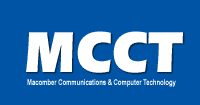| 
The Millennium's flexible call coverage features provide a means to ensure
that calls are routed and handled by proper, designated extensions so
that calls are handled by qualified, knowledgeable employees at all times,
even if a call has to be directed off-premises; for example, to a cellular
phone. The Millennium will redirect calls to alternate extensions when
the original called party is not available. You determine the criteria
for redirecting a call as well as the conditions for the coverage paths
- for example, no answer, unavailable, or busy. The Millennium can also
distinguish between internal and external calls, and provide different
coverage paths for each.
Call routing plans for the Millennium can be simple or complex, depending
on your requirements. The Millennium supports up to 64 plans, and each
plan allows for 60 different sequences of instructions for customized
call handling during specified days of the week and times of the day.
Each plan can be assigned a priority level so that a call can be queued
relative to other incoming calls. Plans can reference repertory numbers
and translation tables and can even provide conditional branching, which
routes calls based on current conditions in the Millennium as well as
calling and called party information.
The Millennium's extensive call pickup capabilities allow an employee
to answer a Park-to-Station call, an All Call Announce call, a paging
access call, an ACD group call, or a call directed to one telephone from
another telephone or dial-in trunk. In other words, employees have immediate
access to any ringing telephone in the building. And when the call is
picked up, the Millennium provides available calling party information
to the telephone's display or if the call is redirected from another source,
the employee will know whom the call was originally intended for and respond
accordingly.

|
|
 |
The Millennium has flexible and powerful conferencing capabilities
that support up to 32 parties in a conference and help improve
collaboration and decision making. The Meet-Me-Conference feature
allows users to set up a time for a conference call and then everyone
can join the call by calling into the system and dialing an extension.
The Query Conference feature allows a user within a conference
to select a specific party in the conference by simply pressing
a programmed button to query the conference members and scroll
through displayed calling party information. Isolate Conference
allows a user within a conference to isolate a member of the conference
and establish a two-way conversation with that person. The system
also allows users to continue a conference even if other members
of the conference are external.
The Millennium system's ability to deliver information on both the
calling party and called party allows for complex call routing plans
and for advanced voice processing features. Call identification
not only augments the information presented to an ACD agent or to
an attendant in a multi-tenant application, but also, using the
called party number routing capability, provides a cost-effective
solution by reducing the number of telephone lines needed to cover
incoming calls.
The Millennium supports the Telocator Alphanumeric Protocol (TAP),
which is an industry standard protocol for alphanumeric page generation.
This protocol was developed and is governed by the Personal Communications
Industry Association (PCIA). It allows the Millennium to communicate
with third-party message generation devices, such as paging systems,
email gateways, nurse call systems, alarm and monitoring devices,
and point-of-sale systems. With this integration, the Millennium
digital telephones and the Orbit Handsets have the ability to receive
alphanumeric page messages on their LCD displays.
|
of the Millennium's powerful telephony
features include...
- The system is fully programmable
to meet your company's communications requirements, and it provides
a wide variety of station and system features that will meet the
needs of virtually any site.
- Several of the system features allow
you to streamline the use of your existing resources. |
|


